How to install the bracket and hang the TV on the wall?
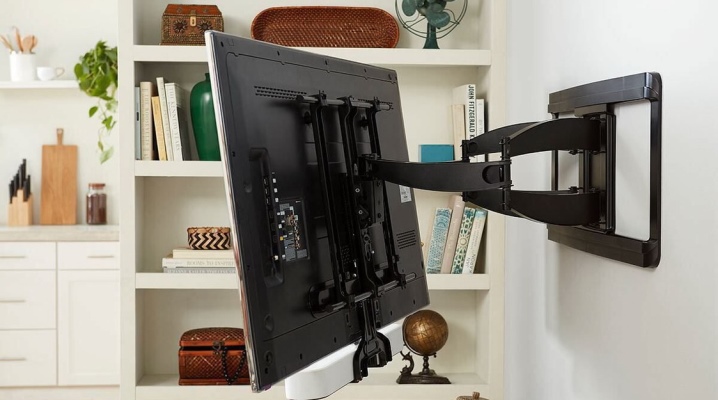
Modern technologies have made great strides over the past two decades, and now an ordinary household TV has turned from a bulky heavy box into an elegant and thin liquid crystal device that can decorate any interior with its presence.
To place television equipment in a residential area, you no longer need to look for a bedside table or a table - it became possible to place almost any model on the plane of the wall or ceiling, while it does not take up a lot of usable area. This installation of the TV has become very common, and it has many advantages, saving valuable square meters of space and protecting expensive media equipment from falling or other damage. The main thing when mounting television equipment on the surface of the wall is to think well and determine the place for its placement and choose the appropriate type of bracket.
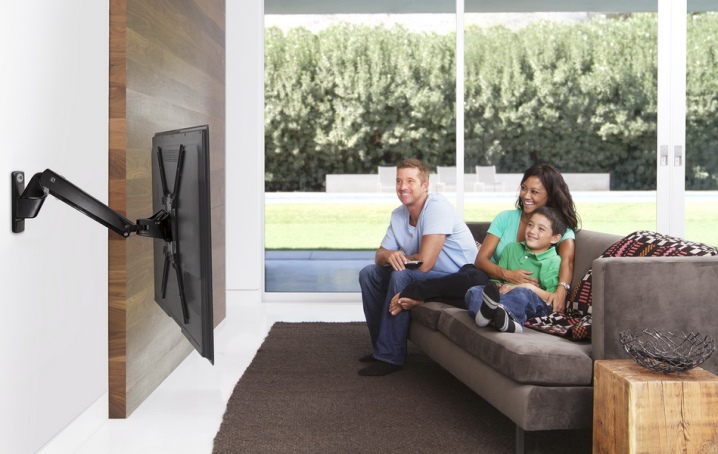
Characteristics of the place for installation
The most significant moment in creating a comfortable viewing environment for TV programs is the selection of the best site for placing a flat-panel TV on the wall surface. In addition, it is important to choose the level of placement of the bracket. Experts advise to fix the television cabinet so that it is on a horizontal line with the position of your eyes, which allows you to see the image on the LCD screen in full and from any point of view.
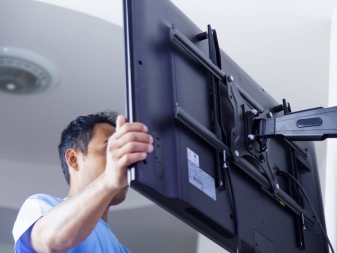
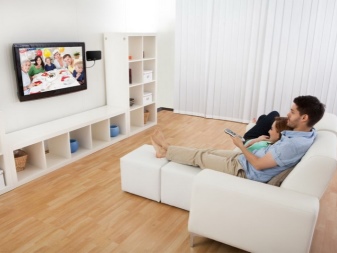
Location
The correct choice of the room for its placement, as well as the size of the furniture available there, will help you navigate how to correctly position the television equipment on the plane of the wall. If you plan to hang the media device in the living room, then it is best to do this in a resting place.
The fixing of the TV case is performed directly at eye level of an adult, who sits, for example, in an armchair. In this case, the mounting height of the bracket is calculated individually, although it is usually done at a distance of 0.9-1.3 m from the floor surface. Sometimes a flat panel TV is planned to be hung in the bedroom. In this case, a person watches TV in a supine position, which means that it should be placed on the wall much lower than in the previous case.
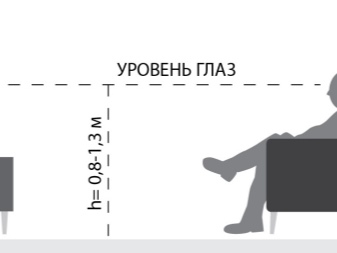
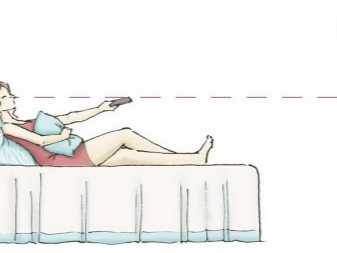
Often a flat-panel TV is placed on the kitchen, however, it is not so much watched as listened to, and there is not very much room for its placement. For this reason the mounts holding this device are mounted to the ceiling. Such a solution significantly saves space and ensures the TV is safe from damage, since it is almost impossible to accidentally touch the screen with this placement.
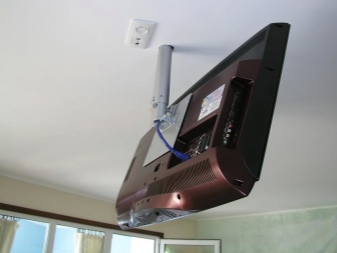
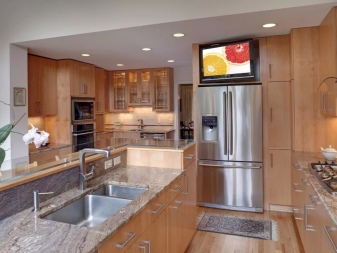
The optimal distance from a television screen to the viewing position is usually 3 or 4 times the diagonal of the screen. At such a distance, watching TV will be comfortable, your eyes will be less strained and tired. In addition, it is believed that there should be no distracting objects close to the TV: furniture, plants, paintings, and so on. The reason is simple - all these things will distract your attention from the events taking place on the screen.

Determining the location of a flat TV device, you need to know that the back wall of its structure must be ventilated.If this does not happen, internal components overheat and fail prematurely.
It is not recommended to mount the TV panel in places such as:
- a niche made of plasterboard, or the space formed by shelves or racks, due to the fact that air ventilation is difficult there;
- surface walls with electrical wiring inside, heating pipes, gas supply or water supply;
- wall with dilapidated plaster, with a wet surface, as well as if its surface is crumbling or has deep cracks;
- corner wall due to the risk of accidental damage to the LCD screen.
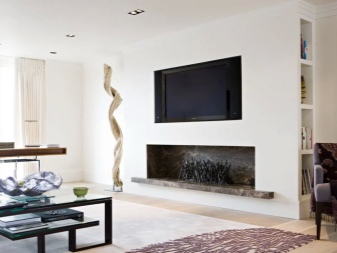
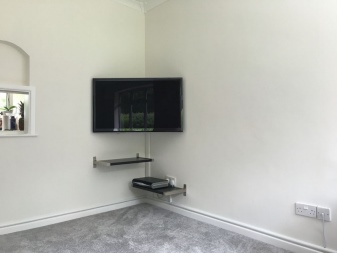
In order to secure television equipment, it is advisable to choose a place located next to an electrical outlet, this will save you from having to pull extension wires and think about how to hide them.
Wall material
When performing finishing work in modern interior solutions, a plasterboard panel is often used. With its help, they not only level the surface of uneven walls, but also arrange artificial niches or partitions between rooms. There is an opinion that it is impossible to hang a heavy TV on a plasterboard structure, since this material is unreliable, as a result of which the TV device may fall. However, according to experts, if you follow the technology for performing work, then there are no problems when working with drywall and its operation.
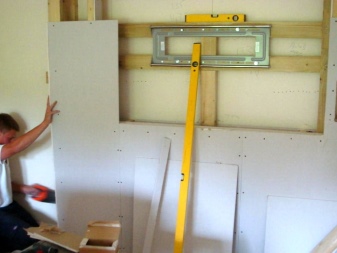

It is known that drywall cracks and collapses with an incorrectly selected fastener, which is not able to evenly share the load of the mounted TV case on this material.
To ensure a secure fit when mounting an LCD TV choose dowels such as "butterfly", "hartmuth" or "umbrella"... Their design provides for expansion inside drywall, which increases the reliability of the created fasteners. Television sets weighing 20-30 kg are fixed to the wall using Hartmut dowels, which consist of a screw and plastic expansion elements. If the weight of television equipment exceeds 30 kg, then it will be possible to fix it on the wall only with the help of a bracket.
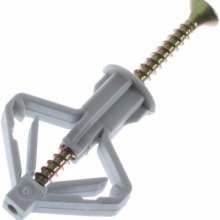


Another common finishing material that contains gypsum is plaster. It is used for zoning space, making partitions from thick double blocks. It should be noted that fixing a flat panel TV on a plasterboard surface is a completely solvable task. In this case, dowels are also used, which open inside the block, thereby ensuring high-quality retention of the equipment.
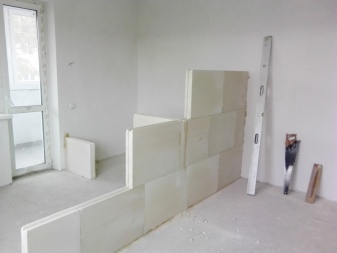
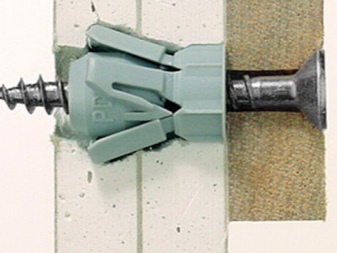
Bracket types
To place television equipment on a vertical plane or fix it to the ceiling, special systems called brackets are used. For every modern generation TV, on the back of the case, you can see the area that is used for mounting fasteners. An accurate sizing of this area will be required in order for you to find the appropriate mounting option.
Most modern models of television panels have 4 fasteners that are fixed and immovable, but there are also options where, if necessary, you can adjust the distance between the fasteners.
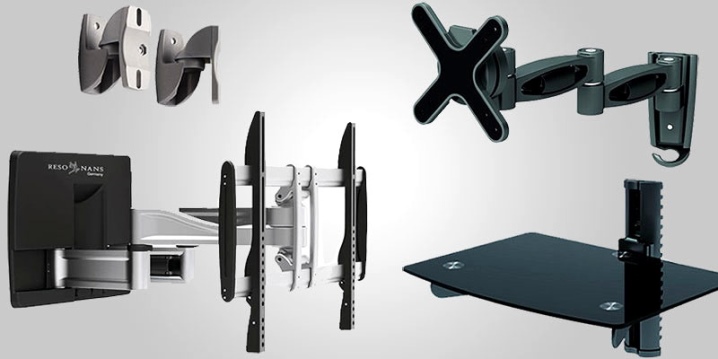
Having solved the issue with the TV panel fasteners, the next step is to choose the appropriate bracket option.
Fixed
This type of TV bracket is considered the most common, it has proven itself well in use. The outwardly fixed version of the device looks like 2 mounting plates. The first is placed on a vertical surface, and the second is mounted to the TV.
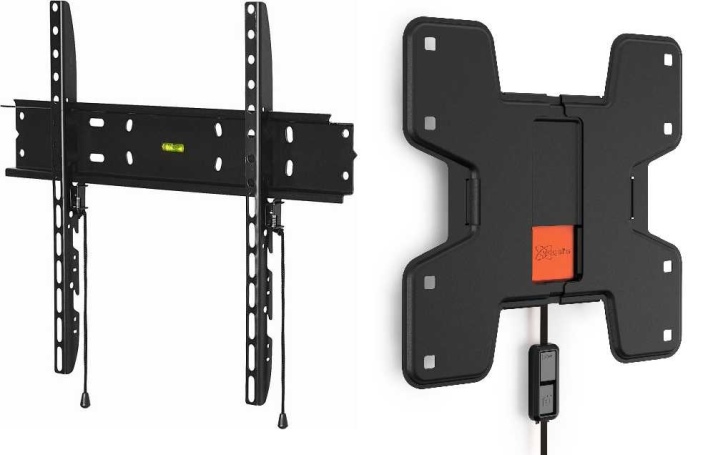
Tilted
It is used to place the TV panel at a comfortable level for the eyes. The design allows the panel body to be rotated at different angles, which saves space. Using this type of design, you can spend a long time in front of the TV without experiencing discomfort in the neck area.
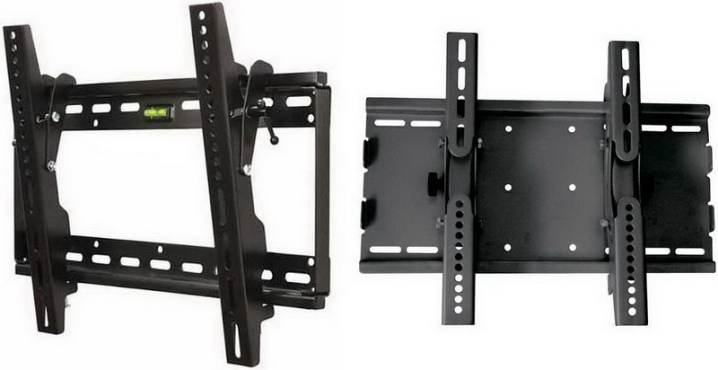
Tilt-swivel
This version of the device is used to fix the television cabinet in the highest part of the room - on the ceiling. The design has a special device that allows you to turn the LCD TV in the direction you want.
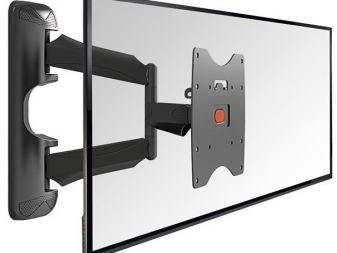
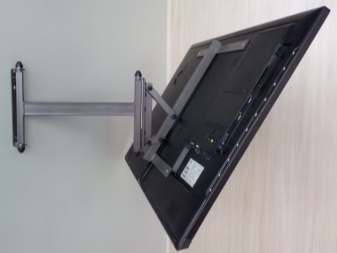
Ceiling
Another type of bracket that allows the TV cabinet to be positioned indoors using a ceiling surface. The fixed structure makes it possible to change the angle of inclination and to rotate the body of the television panel.
When choosing a design option for fixing the TV to a ceiling or vertical surface, it is required to take into account that excessively long mounting parts will look unaesthetic, peeking out from the contours of the TV case.
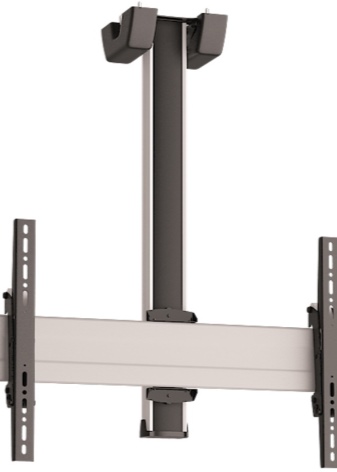
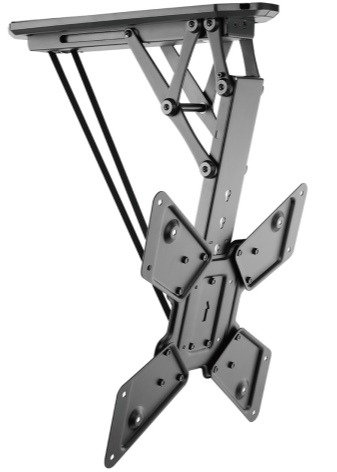
If the bracket is too small, then there is a risk of collapse of the structure along with the TV.
Tips for choosing a mounting device
Choosing the size and type of fastening of television equipment, proceed from its dimensions - in particular, the value must be equal to the diagonal size of the screen, which is specified in inches. Manufacturers provide each TV bracket with information for the buyer, allowing to correlate its dimensions with the parameters of TV equipment.
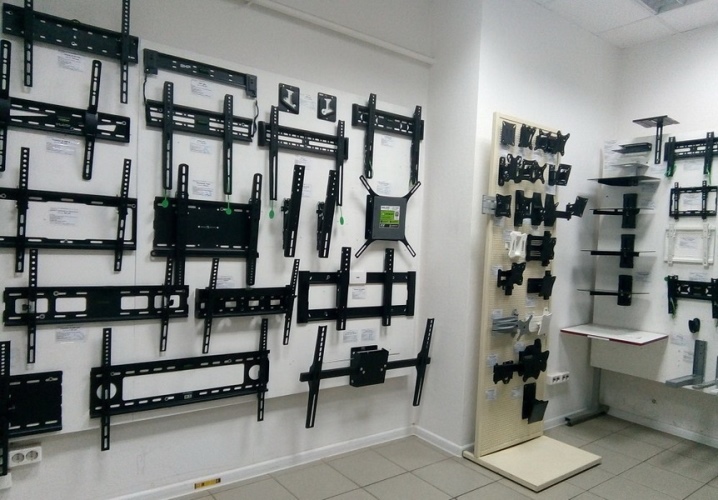
In the world of electronic and television technology, there is an association called VESA, according to the standard parameters of which modern manufacturers produce the same type of devices for mounting televisions, while observing the standard dimensions for the format of common models of television equipment. The VESA models have 4 mounting holes on the back of the TV, which are compatible with most brackets available. For this reason, choosing a bracket, you just have to find out which VESA parameters of the TV it is compatible with.
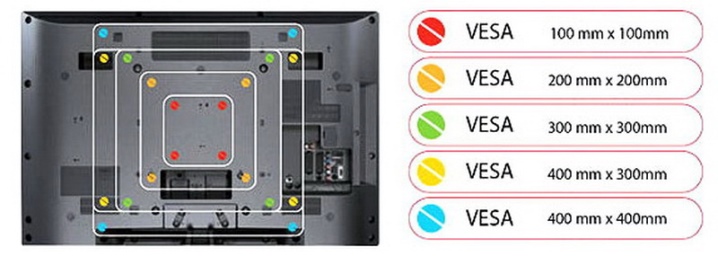
Step-by-step instructions for mounting the TV on the wall
Before you screw the bracket for fixing the TV panel on a vertical surface with your own hands, certain preparatory work is required. Some models of flat-panel TVs are produced with the ability to install them on a stand of one form or another, with which the TV equipment can be placed on a flat horizontal surface. This stand is usually removable. If you dismantle it, then the television panel can be placed on a vertical plane.
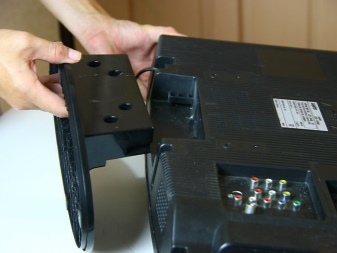
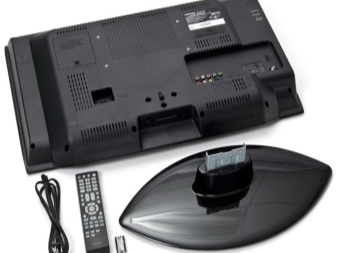
Preparation
- Determine the distance from the floor to the bracket attachment point and make markings on the wall where the bolts will be screwed.
- Determine the diameter of the boltssuitable for the bracket, or the size of the dowel to assemble and secure the bracket to the plasterboard wall. Most often, the bracket comes with standard screws in the required amount.
- Measure the distance from the top holes on the bracket to its bottom edge. Next, the size obtained by measuring the attachment point on the TV is added to the distance from the floor level - this will be the height of the lower edge of the bracket. At this level, a horizontal line is drawn using the building level.
- Then you need to attach the bracket to the wall and mark the points for drilling through the holes of the mounting sleeve - the retaining screws will be screwed in here.


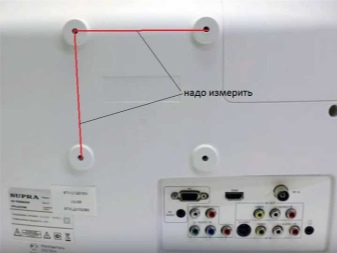

When preparing a wall for placing a TV on it, it is necessary not only to remove previously screwed in screws, but also to check this area for hidden electrical wiring or central heating pipes, the location of which is sometimes found inside walls in houses of old housing stock.
Installation
After completing the preliminary preparatory work, you can proceed with the installation of the wall bracket and TV panel:
- holes are drilled in the wall using the available marks and dowels are driven into them;
- tighten bolts or screws;
- fix the bracket and check the reliability of its fastening;
- the television panel is aligned with the mountings and placed on the bracket.

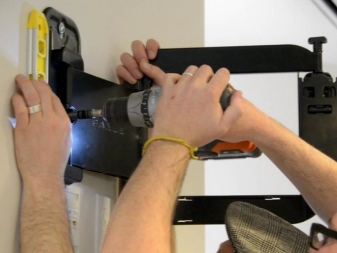
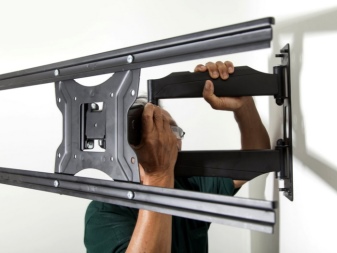
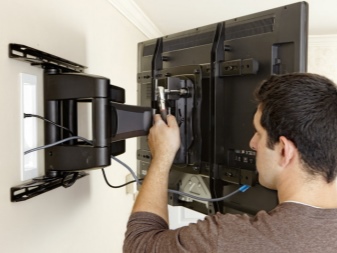
To hang and secure the TV equipment on the bracket, especially those having a large weight and dimensions, you need to use the help of a second person - so you are guaranteed to avoid unexpected situations and do not damage the TV during installation.
Manufacturers of LCD TVs with a screen size of 42 inches or more are creating TV equipment that can be wall-mounted without a bracket. It is replaced by special mounting ears or grooves made in an industrial way and located at the back of the TV case. This design makes it much easier to place the TV on vertical surfaces, since the installation process in this case is no different from if you had to mount a shelf or picture frame on the wall.
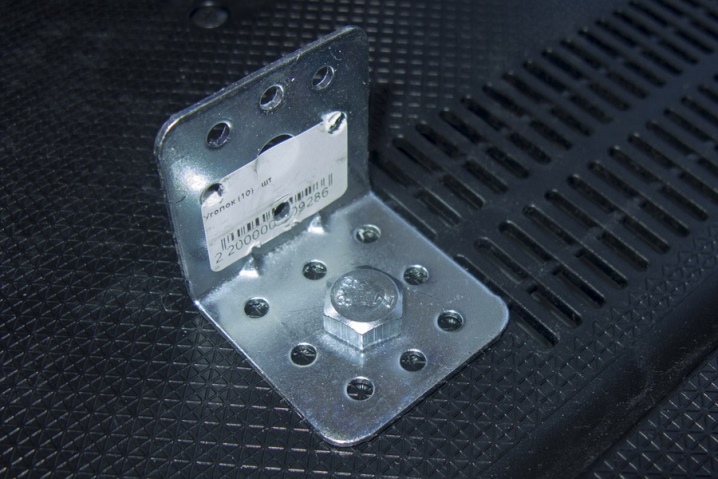
For how to mount the TV bracket to the wall, see the following video.













The comment was sent successfully.